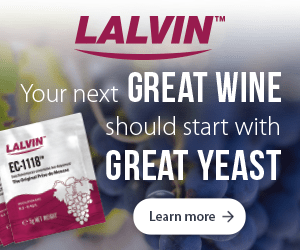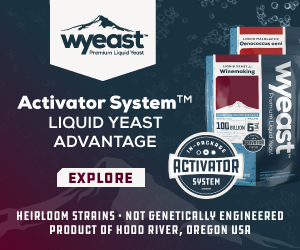I really applaud you for keeping such detailed records and testing regularly. This really helps me when diagnosing issues and coming up with ways to help. I want to start off by saying that raspberries are a really high-acid fruit and that high titratable acidity won’t necessarily track with the pH like it does in wine from grapes.
For background (and to add to the fun of fruit winemaking), there can also be a considerable swing in pH/acidity and Brix depending on raspberry cultivar and growing season. In a study of four varieties in the 1980s and 1990s, a TA swing between 1.5% to 2.64% was observed. Buffering capacities for fruits will be different and we can’t expect a raspberry wine to behave like a grape wine, especially when the inherent chemistries are so different. Grapes are high in tartaric and malic acids especially, with smaller amounts of citric and other acids. Raspberries don’t have tartaric or malic acids and are very high in citric and ascorbic acid. In short, deacidification rules and practices that we may be used to in grapes won’t necessarily apply when producing a raspberry wine.
Since there isn’t any tartaric acid, your cold stability seeding step (seeding with potassium bitartrate crystals) won’t draw out tartrates like you’d expect from a grape-based wine. I am curious, however, if chilling the wine down had any effect of moving the TA down. It would definitely be worth it for you to do another TA and pH measurement post-chilling to see where that moved your numbers. I’d be curious to see if freezing a small sample (and then measuring the pH and TA of the liquid on top of any precipitate) moved the TA and pH in a direction that you liked. But ultimately, “do you like the wine more?” is the real question.
Because pH determines microbial activity (and affects color), I’m not sure I would add any more carbonates (potassium bicarbonate or calcium carbonate) to deacidify any further. Does the wine taste OK to you, even if the numbers are “out of balance” when we’re talking about table wine? If the acid tastes unpleasant to you, one trick is to balance it out with some sweetness and then sterile filter your final product. Can you add some sugar and alcohol (like a non-harsh vodka or grappa) to make a sweet, boozy dessert wine? Sugar can cover up a lot of acid and help move a wine towards a more balanced state.
One of my favorite wines I ever had a hand in making was the famous Framboise dessert wine at Bonny Doon Vineyard. To make it (not that I can give away the exact formula), we took fresh raspberries and essentially macerated them in sugar syrup and neutral high-proof grape spirits. After a few weeks we pressed off and separated the solids from the liquids to create a sweet, higher-alcohol nectar. I know that’s not a traditional table wine and it’s very different than your product here, but I do think a lot could be achieved by adding some grape concentrate or sugar syrup and sterile filtering.




